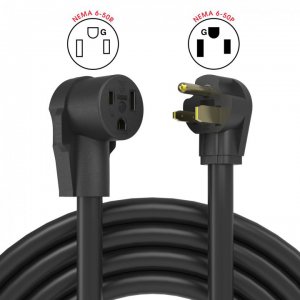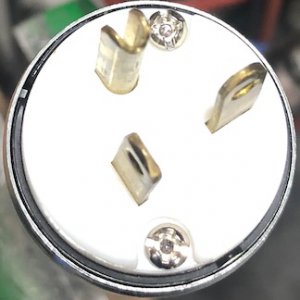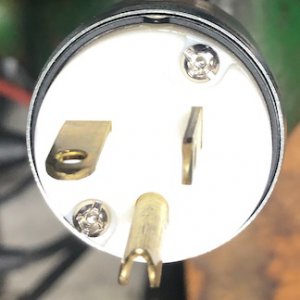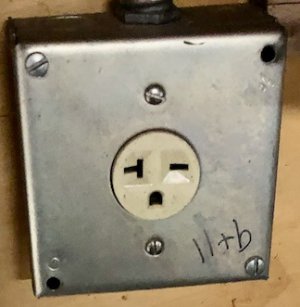I wonder if you could upload a picture of your male receptacle. I am curious if it is that really common 3-prong configuration seen here:
View attachment 399449
He said he put a 30 amp plug on it. Your picture shows a 50 amp plug.
NEMA 6-50 can be read as follows:
The 6 means 2 hots (single phase, 240V between hots), 1 ground, no neutral
The 50 means 50 amps.
The first number is rather arbitrary, you need a magic decoder ring. Some other values are:
1: one hot, one neutral, no ground. 120V between hot and neutral. 1-15 is the old-fashioned 2-prong residential receptacle.
5: one hot, one neutral, one ground. 120V between hot and neutral. 5-15 is your vanilla 3-prong residential receptacle
6: two hots, no neutral, one ground. 240V between hots.
10: two hots, one neutral, no ground. 240V between hots, 120V between either hot and neutral. No equipment grounding conductor, not very safe. Deprecated by the national electric code since 1996, should be replaced by type 14.
14: two hots, one neutral, one ground. 240V between hots, 120V between either hot and neutral. Pretty universal, can run any 120/240V device.
15: three hots, one ground. Three phase, 240V between hots. I use the twist-lock version of the 15-30 for all three-phase equipment in my shop.
16: three hots, one ground. Three phase, 480V between hots.
Not all combinations of type and current rating exist. Twist-locks exist in many of these types (identified by an L prefix, such as the L15-30 that I use for three-phase stuff). Twist locks generally aren't available above 30A (except for "california plugs" which are another thing altogether that I won't go into...)




